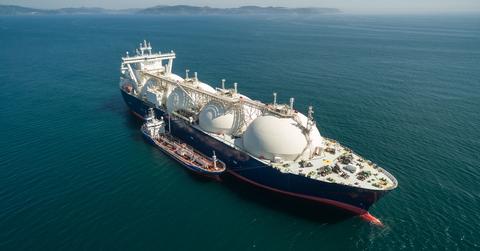2020’s Natural Gas Outlook: Winter Is Coming
Natural gas’s outlook might turn bearish. Last week, natural gas prices rose by 2.3%. The higher prices were due to the bullish weather forecast.
Dec. 9 2019, Updated 3:20 p.m. ET

Natural gas’s outlook might turn bearish. Last week, natural gas prices rose by 2.3%. The higher prices were due to the bullish weather forecast towards the end of the last week. A week ago, natural gas recorded the highest weekly decline in the last year. At 6:33 AM ET today, active natural gas futures have fallen 4.6%. Concerns about a warmer winter dragged natural gas futures. We’ll discuss what investors can expect from natural gas’s outlook during the winter season.
Today, the Refinitiv “GFS00” weather model has a reading of 20.5 HDD (heating degree days) less than last week’s reading. The “EC00” model also indicated a fall of 16.7 HDD from the level on December 6. A lower HDD forecast until December 24 could drag Henry Hub natural gas futures.
On December 6, natural gas’s implied volatility was at 55.5%. The volatility projects a price range of $2.18 per MMBtu and $2.49 per MMBtu for this week. To learn more about this price model, read Analyzing Implied Volatility for Crude Oil and Natural Gas. The weather data indicates that prices could break below $2.2 per MMBtu.
OPEC+ reduces oil output
OPEC+’s decision to reduce the oil output could lead to weaker natural gas futures. So far in 2019, the correlation between oil and natural gas prices has been at 16%. The correlation could turn negative in the next few months. Read Inventory, OPEC+: Will Natural Gas Prices Fall? to learn more about oil prices’ influence on natural gas.
Natural gas supply could exceed demand
In a report, S&P Global Platts indicated a rising level of natural gas inventories. The report also said that the supply growth will be 2 Bcf per day more than the demand growth if the weather stays normal this winter.
Oversupply concerns aren’t new to the natural gas market. Notably, natural gas prices have fallen more than 50% in the last decade due to rising supplies. The oil bull run between 2010 and 2014 contributed to higher natural gas supplies.
However, the weather is the most critical factor. Natural gas consumption in the winter usually reduces the inventory level. If the temperature shifts from a normal winter to a warmer winter, the situation could get worse for natural gas futures.
On Tuesday, the EIA will report the STEO (Short-Term Energy Outlook) report. The report might focus on future weather patterns in the lower 48 states. Previous reports highlighted a bearish outlook for the 2019–2020 winter season.
Takeaway capacity
The LNG export capacity is key to natural gas prices. An S&P Global Platts report expressed concerns about Kinder Morgan’s (KMI) lower capital expenditure guidance and its impact on gas pipeline projects. To learn more about natural gas exports, read An Overview of US LNG Production and Exports.
In May, Texas’ oil producers had to pay to remove natural gas glut in order to continue oil production. Natural gas prices turned negative for Texas shale oil producers.
The takeaway capacity constraint in that region was the main factor behind negative prices. Read Rise in Natural Gas Production Might Not Be Avoided to learn how oil production impacts natural gas prices.
